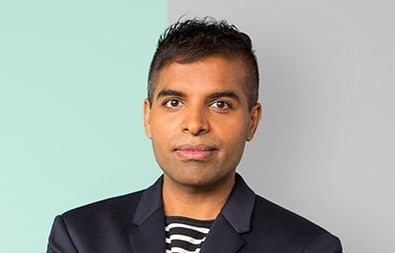Viewpoint
 Suki Sandhu, Founder & CEO of INvolve explains why diversity is good for business in engineering
Suki Sandhu, Founder & CEO of INvolve explains why diversity is good for business in engineering
The world is finally waking up to the fact that diversity and inclusion is an issue that cannot be ignored. In society we’ve seen progress being made on issues such as the legalisation of same-sex marriage and more diverse representation within the media. However, there remains a fundamental problem within business with the engineering sector being no exception - companies are not doing enough to address the issue of diversity and inclusion within their own workplaces.
Other than the obvious point that having an inclusive workplace is fundamentally the right thing to do, the business benefits are also clear. A diverse workforce brings insight into different socio-economic groups, awareness of different cultural sensitivities and values, and increases innovation and new idea generation. This all gives diverse companies a clear competitive advantage. For the doubters the numbers speak for themselves. Research done by INvolve and the Centre for Economics and Business Research (CEBR) shows workplaces in the top quartile for overall diversity are 45% more likely to have financial returns above their national industry mean than those in the bottom quartile. Companies would be foolish not to recognise these business benefits.

Crucially for engineering, building a diverse business also means opening the door to more talent. It is well documented that engineering is a male dominated industry which means missing out on a large percentage of the population’s talents – before we even delve into other diversity areas.
The sector is facing a skills crisis like never before, and measures need to be taken to help the leaders of the engineering industry fill the jobs that are integral to the field. According to the government’s own study, for the engineering sector to gain enough candidates to reduce the skills shortage, they would need around 186,000 skilled recruits each year until 2024. Encouraging women into engineering and retaining them within the industry can only help to plug this skills gap.
However, true diversity is about much more than just gender. A survey published by the Institution of Engineering and Technology (IET) showed that 87% of UK engineering firms have no diversity initiatives in place for LGBT+ or ethnic minorities.
Christina Riley, Senior Construction Planner at Kier Group comments, “My experience of being LGBT+ in the engineering sector is that the culture still has a long way to go before it is fully inclusive. I remember a person talking to me at an LGBT Engineering event two years ago and saying that they had worked in the engineering sector for their whole lives, and still couldn’t be authentic in the workplace. They had kept their sexual orientation a secret for their whole career, and you could see the emotion that had built up from keeping this secret for so many years.
But progress is being made. The Royal Academy of Engineering have produced a number of resources on diversity and inclusion in the sector over the last few years, and this year the sector celebrated #LGBTinSTEM day in July with the hashtag going viral across the world. More companies than ever are beginning to take part in Pride Season, and this is now filtering through to the sector. There are a lot of positivity starting to happen.”
To build on this progress and support diverse staff within a truly inclusive engineering sector, companies should look to focus on the following:
- Support role models – Making role models from minority groups visible and vocal is powerful. Never underestimate the importance of being able to look up and see someone who ‘looks like you’; showing that minority groups can succeed in business while being authentic to themselves. Creating these role models will help to secure a future talent pipeline and help build employee led networks who can support minority communities and increase their visibility within the organisation.
- Conscious inclusion in management/leadership teams - Everyone has ingrained biases, but if we don’t learn to manage them (particularly the harmful ones) then it will only be detrimental to our workplaces. Regular diversity and inclusion training should be held at all levels – particularly around conscious inclusion - to help to shift perceptions and improve company culture.
- Inclusive policies to support specific needs - e.g. parental leave for same sex couples and medical cover for transition related procedures. Companies need to review their policies regularly to ensure they are fair, equal and inclusive for all. Society is moving fast – business needs to keep pace.
- Develop an equal opportunity recruitment policy - Diversity takes conscious effort to achieve. Becoming an equal opportunity employer will show minority candidates that they are welcome. Put together a hiring committee who will ensure the policy is observed, brainstorm ideas for attracting more diverse candidates, and consider where you are advertising for jobs and the language you’re using to find candidates. Diversity needs to be made part of the company's core values so everyone knows that inclusivity is not a one-time initiative.
If you know someone who has been an inspirational role model in promoting and championing LGBT+ rights within the engineering sector, nominate them for the annual OUTstanding LGBT+ Role Models 2018, presented by the FT here: https://www.out-standing.org/nominations/










Water Sector Talent Exodus Could Cripple The Sector
Maybe if things are essential for the running of a country and we want to pay a fair price we should be running these utilities on a not for profit...